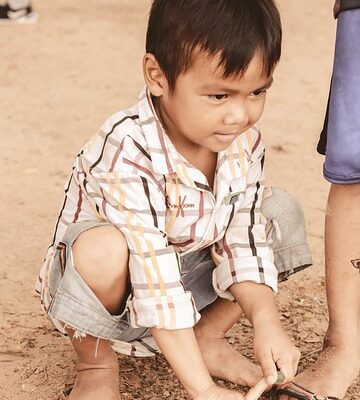Understanding the Impact of Technology on Child Development
Understanding Child Development and Its Relation to Technology
Technology has become an integral part of our daily lives, and its impact on child development cannot be ignored. As parents, we want the best for our children, and that includes providing them with a safe and nurturing environment where they can grow and thrive. However, with the increasing use of technology in their daily lives, it is essential to understand how it affects their cognitive, social, emotional, and physical development.
In this article, we will explore the impact of technology on child development, highlighting both the positive and negative effects. We will also provide tips and strategies for parents to help their children navigate the digital world safely and effectively.
Child Development: Milestones, Ages and Stages – Children’s Health
According to the Centers for Disease Control and Prevention (CDC), child development is a lifelong process that involves physical, cognitive, emotional, and social growth. Technology can influence various aspects of child development, including:
1. **Cognitive Development:** Technology has made learning more accessible and engaging for children. Educational apps, online games, and interactive websites can provide a wealth of information and skills-building opportunities. However, excessive screen time can lead to a lack of physical activity and social interaction, which are essential for cognitive development.
2. **Social Development:** Social media platforms have become an integral part of childhood. Children use these platforms to connect with friends, family members, and even strangers. While social media can provide a sense of community and belonging, it also exposes children to online bullying, harassment, and cyberstalking.
3. Cyberbullying Prevention Strategies: Teaching children how to use technology safely and responsibly is crucial. Parents can educate their children on the consequences of cyberbullying, online etiquette, and digital citizenship.
4. **Emotional Development:** Technology can affect a child’s emotional development in several ways. For example, excessive screen time can lead to increased stress levels, anxiety, and depression. On the other hand, technology can provide a sense of comfort and security for children who have experienced trauma or loss.
To promote healthy technology use habits among children, parents should:
* Set limits on screen time and encourage physical activity
* Monitor their child’s online activities and ensure they are using technology safely and responsibly
* Engage in open and honest conversations about the benefits and risks of technology
* Model healthy technology use behaviors themselves
Integrating Technology into Family Activities
Technology can be a valuable tool for family bonding and creating lasting memories. Here are some ways to integrate technology into family activities:
1. **Digital Games and Puzzles:** Engage in digital games, puzzles, and brain teasers together as a family.
2. Create a Family Digital Safety Plan: Develop a plan with your child to ensure they know what to do in case of an online emergency or cyberbullying incident.
3. **Digital Photography:** Take digital photos and create a family album or scrapbook together.
4. Virtual Family Activities: Participate in virtual scavenger hunts, online cooking classes, or virtual game nights to stay connected when you’re apart.
Conclusion:
Technology is an integral part of modern childhood, and its impact on child development cannot be ignored. While technology provides numerous benefits, it also poses risks such as cyberbullying, screen time addiction, and emotional distress. By understanding these risks and taking proactive steps to promote healthy technology use habits, parents can help their children navigate the digital world safely and effectively.
Parents should stay informed about the latest research on child development and technology by visiting reputable sources like the CDC and Children’s Health Organization. By working together with your child and modeling healthy technology use behaviors, you can create a safe and nurturing environment that fosters their overall well-being.
Remember, child development is a lifelong process, and it requires patience, understanding, and flexibility. By embracing the benefits of technology while minimizing its risks, we can help our children thrive in today’s digital age.




